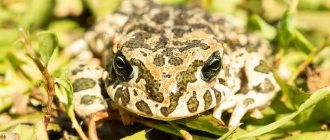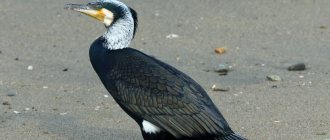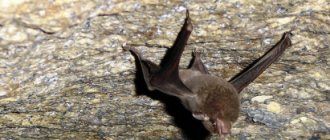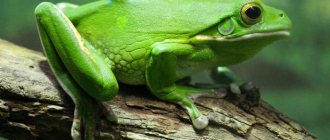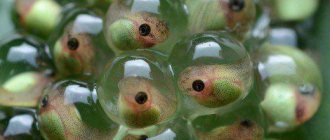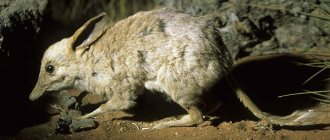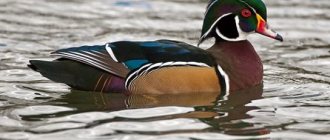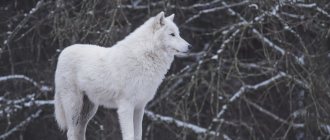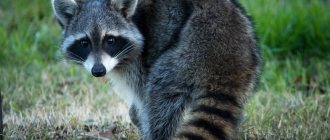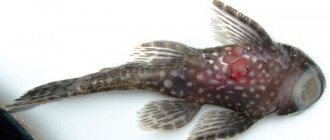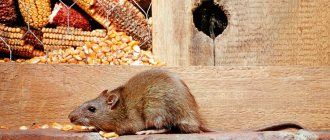Where did the view come from?
The goldeneye duck is found both in Eurasia and in America, but North America is considered its homeland. From here its ancestors migrated to Asia, and then spread throughout the rest of the lands up to the western extremities of Europe. This is a diving duck, which is not very numerous, but is not rare either.
It is believed that there are two subspecies of the goldeneye duck:
- North American, larger.
- Eurasian.
There are no significant differences in appearance, behavior and nutrition. A nest box is used as a nest; the birds prefer the banks of forest rivers and lakes; they do not form large flocks for migration; they winter on the coasts of seas and lakes, large rivers, and estuaries.
Origin story
What the breed looks like, photo:
North America is considered the birthplace of birds. However, thanks to the chronicles, it is known that even in Kievan Rus, gogols were valued for their fluff and were raised on farmland. The phraseology “walking like a gogol” was formed by comparing a person with her.
On land she moves interestingly - she throws her head back and walks slowly, as if presenting herself as a very important person.
Description of the bird
The goldeneye duck is a medium-sized bird, not exceeding 50 centimeters in length, strong, stocky, with a rounded head with noticeable feathery “cheeks” and a smooth oval “tuft.” As is typical among birds, female goldeneye ducks are smaller than males and have more modest colors.
They have a grayish-brown tint of plumage, a light brown head, a white stripe in a ring on the neck, yellowish paws, and some individuals have a light orange bandage on the beak. The weight of the duck ranges from 550 to 810 grams. Young goldeneyes have the same colors, regardless of their gender.
Males are distinguished by their colorful breeding plumage. Their lower body, sides and neck are snow-white, the top is black with peculiar stripes formed by the feathers of the wings. The black head of the goldeneye duck has a characteristic “gasoline” tint and white spots on its cheeks. The beak is black, the paws are orange. The weight of the drake is from 570 to 900 grams.
Expert opinion
Zarechny Maxim Valerievich
Agronomist with 12 years of experience. Our best country expert.
Ask a Question
The chicks are very similar to the broods of other wild ducks. They are fluffy, grayish-brown with a black and white blurred pattern.
Interesting Facts
- The golden iris of the goldeneye's eyes, clearly visible against the background of the head color, gave the duck the name common lacewing, translated from English.
- In the 80s of the last century, the goldeneye was listed in the Red Book due to its small numbers, but its population was not only preserved, but also increased through breeding in artificially created conditions.
- Gogol is a free bird; on farms where they are bred, ducks are isolated from other birds and, if possible, the process of feeding and caring for them is automated, since birds do not like human interference in their lives, the duration of which in captivity is reduced to 5-7 years. And the maintenance of the goldeneye cannot be called simple - it needs unlimited access to water, small smooth pebbles and granular sand. Domestic ducks are fed fresh fish, special varieties of buckwheat and barley, thoroughly soaked in water.
- Newly hatched ducklings are able to jump out of the nest, located at a height of up to 15 meters, after their mother and not be harmed at all.
- Sometimes the male stays next to the nest for 5-8 days after the female lays eggs; he only protects the future offspring, but does not participate in incubation and does not bring food to the duck.
Ferret animal. ferret lifestyle and habitat
Lifestyle and habitat
The goldeneye duck prefers forest lakes, rivers, and reservoirs, which supply them with food and shelter. Birds choose places where there are old hollow trees along the banks, necessary for nesting, but they also calmly settle in artificial nests created for them by people. The goldeneye duck does not like open places, so it is practically not found in “bare” river floodplains.
See also
Names and 5 varieties of black ducks, which one is better to choose and how to keep themRead
For nests, the bird prefers to choose deciduous trees, but can also use coniferous trees, for example, pine. If there are a large number of hollows, the goldeneye duck prefers to maintain a distance between nesting sites, but, if necessary, puts up with forced crowding.
These are migratory birds, however, under favorable weather conditions and with an abundant food supply, they can remain for the winter. Most often these are single pairs of ducks or small groups of up to 5-6 individuals. In the northwestern part of Europe there are a few flocks of birds leading a sedentary lifestyle.
Ducks fly away early, from the end of August, but the bulk of the birds set off on their journey in the second half of October. They gather in small flocks of 10-30 birds each.
In a number of countries, the goldeneye duck is considered a game bird, but in Belarus it is listed in the Red Book.
How to attract goldeneye ducks to nest?
Due to human activity, the population of this breed is constantly decreasing, so the issue of arranging artificial nest boxes to attract and breed birds becomes extremely relevant.
It is quite simple to build a nest box ; it consists of a box up to 60 cm high and 25 cm wide. The walls should be at least 2 cm thick, and the diameter of the taphole should be 10 cm. The bottom of the box should be covered with a thick layer of sawdust or leaves.
Photo of the nest
Such nests are also called gogolyatniks. To successfully colonize nesting boxes, they should be hung on trees near a wide body of water, and the nesting boxes should be clearly visible and noticeable to birds from the water.
Important! Catching fish using nets in reservoirs where goldeneyes live is strictly prohibited, since the birds often die after becoming entangled in the nets.
The nest boxes should be hung up before the birds return in the spring.
To better understand how successful the work was, you can keep records and record the number of hanging nests, their height, size, installation time of the nest, and distance to the reservoir.
After a certain time, statistics will make it possible to understand the preferences and needs of birds and significantly improve their nesting.
What do they eat?
The diet of the goldeneye duck consists of aquatic invertebrates, which it hunts at the bottom of the reservoir or in the water column. The duck is capable of diving to a depth of 10 meters, but prefers to settle on rivers and lakes with water up to 4 meters.
In winter, birds actively eat these mollusks and crustaceans. In summer, the menu for goldeneye ducks is much more varied. It includes bloodworms (mosquito larvae), midges, dragonflies, caddis flies, water beetles and other insects. Ducks also eat small fish, amphibians and earthworms, collect seeds and roots of plants, and can peck at the green succulent parts of aquatic plants.
Interesting Facts
The unusual coloring of the iris of the eyes, which stand out brightly against the background of the dark plumage of the large head, gave rise to the English name for the beautiful ducks - Common goldeneye. The golden eyes are clearly visible and give the bird an expression of extreme interest. Ducklings' eyes are dark in color, acquiring a characteristic golden color only at the age of 3 months, when they become completely independent.
Ducklings take their first flight at 2 days of age. The hungry mother leaves the hollow and calls the chicks to her with cries. Ducklings jump out of the nest and sometimes fall from great heights, spreading their wings and legs. Most often the landing ends successfully, because the light weight gives the chicks the advantage of a soft landing. Having descended to their mother, they quickly master the water element, learning to look for food during the very first day of their new life. Ducklings will learn to truly fly only at the age of 2 months.
To live in the summer, hatch and raise chicks, goldeneyes choose fairly deep lakes with a large surface of free water, slow rivers, or bodies of water sparsely populated by other birds in a swampy area. The ability to dive deeply and swim some distance under water allows ducks to feed where neither mallards nor long-necked swans can find food. The main diet of goldeneyes consists of aquatic invertebrates, small fish, frogs and tadpoles. They eat algae and near-aquatic plants.
Reproduction and lifespan
Birds arrive early, as early as March. At the same time, the mating season of goldeneye ducks begins. Most often, future pairs are formed during wintering, but many goldeneyes find their soulmate already in the nesting areas. Ducks reach sexual maturity at two years of age. The period of “grooming” in birds is very bright and expressive. It is then that the drakes take a characteristic pose with a proudly protruded chest and raised head, which gave rise to the expression “walking like a goldeneye.”
See also
What to feed wild ducklings at home, how to tame them and breedingRead
The goldeneye duck begins to build nests in the middle or late spring, choosing trees with hollows at a height of 10 to 15 meters. It prefers free-standing trees, but can also use artificial nesting sites, and sometimes even abandoned holes, for example, hare holes. Often the nest is used by the same pair or female for several years or decades in a row.
The bottom of the nest is covered with wood dust and lined with down, which the female plucks from her own breast. A clutch can contain from 5 to 13 eggs, but more often the average number is 8-11 eggs. They are painted in a bluish or greenish-blue tint, large, up to 67 millimeters long and up to 46 millimeters wide.
Only the female incubates, the process lasts 29-30 days. The hatched chicks are wet, they dry out under the duck for 24 hours, then jump out of the nest on their own, regardless of the height. After just 14 days, the ducklings can swim and dive regularly, they can feed themselves without needing adult supervision, but they begin to fly only by two months. In nature, the goldeneye duck can live up to 20 years.
Contents
Gogols are not bred in households, because...
their meat has an extremely specific taste. However, the eggs and fluff of these waterfowl have always been valued. These birds are often bred as game in hunting grounds located near water bodies. For this purpose, artificial nesting sites are built with the expectation that there will be no more than 3 nesting females per 1 km². Eggers can be made from wood and plywood. In this case, it is necessary to make large holes in the entrances so that the females can penetrate into the nests. The structures are hung on trees located near the reservoir, at a height of about 5-7 m. The nest is attached with a slight tilt forward.
Diet
Even if a person breeds these waterfowl near a pond, there is not always a need to feed them. Crustaceans, insects and algae can fully satisfy their nutritional needs. If many females nest on a pond at once, you can diversify the diet with grains, cake and other foods.
Care
These waterfowl do not require special care. They can independently find food for themselves in a pond. They clean their plumage and care for their offspring on their own.
Breeding ducklings
To increase the number of ducklings on a pond, it is recommended to place as many nesting sites as possible. Even if some of the females are expelled from the reservoir, the offspring will survive and feed.
Taste qualities
The goldeneye duck belongs to the category of waterfowl. Meat has a characteristic taste and smell associated with the consumption of specific foods. To remove them from the carcass, the ducks are skinned and fat removed, and then soaked for a day in a marinade based on wine vinegar.
Fried or baked, this bird is very tasty. Gogol duck does not have any special nutritional or taste value; it is not classified as “red game,” but it can serve as a decoration for any table.
Goldeneye eggs are tasty, but you can only take a few eggs from the nest and only in areas where the number of ducks is large. When consuming, you need to take into account the risk of infection with salmonella and other parasites, so duck eggs are used only after heat treatment.
Hunting for goldeneyes
Typically, hunting for diving ducks begins in the fall and continues until the spring, when the nesting season begins for the birds. However, the goldeneye is an exception: its meat is tasteless and smells like fish, and the weight after plucking is very small - sometimes 250-300 grams, which is why hunters do not favor the bird.
If a duck of this type is eaten, the carcass is completely cleaned of skin and subcutaneous fat, soaked in the marinade for at least a day, then stewed or fried over a fire - the eggnog soup turns out to be tasteless and very greasy.
But the down and feathers of these ducks are warm and soft, especially in the spring, which is why there are those who like to shoot goldeneyes.
Female goldeneye birds in the spring are protected from killing - hunting is allowed only for drakes, but it is forbidden to even frighten ducks, because they hatch eggs, so moving to nesting sites must take place with a sheathed gun.
Most often, decoy ducks are used to hunt goldeneye - they attract the attention of males who come out of the reed thickets and come into the view of hunters who are in boats closer to the creek.
Decoy duck
